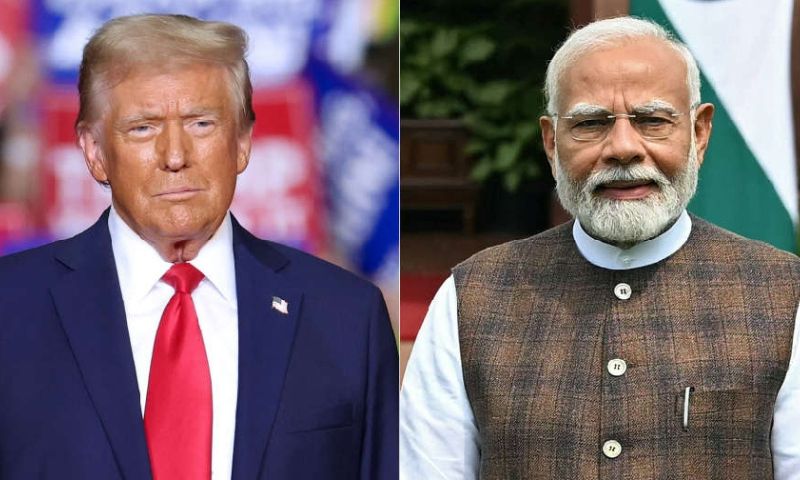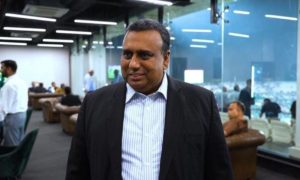NEW DELHI: Indian Prime Minister Narendra Modi is likely to meet US President Donald Trump during a visit to the United States next month to attend the United Nations General Assembly (UNGA), the Indian Express newspaper reported on Wednesday, citing sources.
India’s Ministry of External Affairs did not immediately respond to a request for comment, Reuters reported.
An Indian official familiar with the matter, as cited by Reuters, said that a decision had not yet been taken and that countries generally reserve slots for the General Debate at the assembly.
This, the official said, is why India’s “head of government” appears in a provisional list of speakers for 26 September.
“The list will go through revisions,” the official said, adding that it had not been decided if Modi would attend. The UNGA will open on 9 September, with the debate — the annual gathering of heads of state and government — scheduled for 23 to 29 September.
According to the Indian Express, although the main purpose of the possible visit would be to participate in the UN meeting in New York, a key objective would be talks with Trump to address trade and tariff disputes that have strained ties between the two countries.
The report comes days after President Trump announced an additional 25 percent tariff on Indian goods in retaliation for New Delhi’s continued purchase of Russian oil.
The move took the total levy on Indian exports to the US to 50 percent, one of the highest rates applied to any US trading partner.
Trade negotiations between New Delhi and Washington collapsed after five rounds of talks over differences on opening India’s farm and dairy sectors and ending Russian oil imports.
On Tuesday, US Treasury Secretary Scott Bessent told Fox Business Network’s Kudlow that several major trade agreements were pending, including with India, but described New Delhi as “a bit recalcitrant” in talks.
Meanwhile, Indian exporters are scrambling to mitigate the impact of the sweeping tariffs.
Economists and industry leaders have warned of severe job losses if the 50 percent levy is imposed, with Garima Kapoor of Elara Securities telling AFP that “no product from India can stand any competitive edge” at such rates.
India, one of the world’s largest crude oil importers, has until 27 August to find alternatives to replace roughly one-third of its oil supply, AFP reported.
While India is not an export powerhouse, it shipped goods worth about $87 billion to the US in 2024.
The higher tariffs now threaten labour-intensive industries such as textiles, jewellery, and seafood.
The Global Trade Research Initiative has estimated a potential 60 percent drop in US sales in 2025 for some sectors. Exporters say they are rushing to complete shipments before the deadline.
“Whatever we can ship before August 27, we are shipping,” said Vijay Kumar Agarwal, chairman of Creative Group, a Mumbai-based textile and garment exporter with 80 percent exposure to the US market.
However, he warned this was only a temporary measure, adding, “If it doesn’t get resolved, there will be chaos… it will be an immense loss of business.”
Two Indian lawmakers told Reuters on Monday that they hoped trade talks with the US would continue, citing a briefing to a parliamentary panel on foreign affairs.
But businesses say the fallout is already being felt. Some major apparel exporters, such as Pearl Global Industries and Gokaldas Exports, have said US buyers are requesting production be shifted to lower-tariff countries such as Vietnam, Bangladesh, Ethiopia, and Kenya.
Moody’s has warned that the wider tariff gap could reverse gains India has made in attracting investment in recent years.
The gems and jewellery industry, which exported over $10 billion worth of goods last year, has been particularly hard hit.
“Nothing is happening now, everything is at a standstill, new orders have been put on hold,” said Ajesh Mehta of D. Navinchandra Exports, estimating that up to 200,000 workers could be affected.
Seafood exporters have also reported cancelled orders from US buyers. “The United States is totally out right now,” said Alex Ninan of the Baby Marine Group, adding that the industry would try to push into alternative markets such as China, Japan, and Russia, though creating new markets “all of a sudden” would be challenging.


























